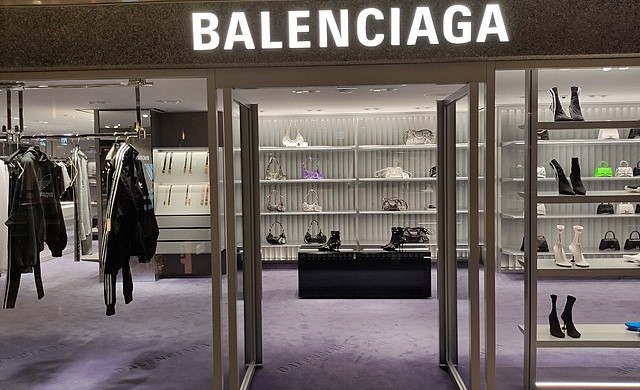Fashion brand Balenciaga recently sparked controversy across social media after launching a campaign that featured photos portraying children with sexually-implicated objects, implying that the brand condones child exploitation. After people expressed their concerns on social media, the brand publicly apologized and filed a lawsuit against the production company working on the project. The Balenciaga scandal is an example of a widely-known brand abusing its financial power to blame others for its own damaging creative choices. Instead, the brand should take responsibility for its marketing decisions.
THE BALENCIAGA CAMPAIGN
On November 16, 2022, Balenciaga published a campaign called Balenciaga Gift Shop which consisted of children posed with products that had sexual implications. Whether or not the brand agreed with child exploitation, the advertisements made a clear statement.
According to The New York Times, “One campaign featured photos of children clutching handbags that look like teddy bears in bondage gear. Another campaign featured photos that include paperwork about child pornography laws.” The campaign sparked a frenzy on social media assuming the company was somehow condoning the sexualization of children.
THE PHOTOGRAPHER
Italian documentary photographer Gabriele Galimberti rose to fame in 2020 for his photography series called Toy Stories. With two years in the making, the photo series contained pictures of children from across 58 countries surrounded by their personal toys. It was a joyful project displaying the different interests, personalities and financial situations of the children in the photos.
Balenciaga asked Galimberti to photograph their campaign, using Toy Stories as the inspiration. The photographer had never shot a fashion campaign. The company had told him that the theme of the project was “punk.” Instead of children posing in front of innocent toys, the children were photographed next to wine glasses, sharp objects, chains and teddy bears wearing fishnet tights and bondage gear.
The New York Times says, “According to Mr. Galimberti, the objects as well as the children and the location chosen for the shoot had all been selected by Balenciaga, with numerous staff members present during the two days of photography.”
THE CONTROVERSY
Regardless of the campaigns’ intentional message, the production of the project itself unsettled people on social media. Many wondered what was acceptable about children being photographed in front of inappropriate objects. Additionally, photos including documents on child pornography sparked concern among viewers regarding the company’s perspective on child exploitation.
ABC reported, “On a messy desk featured in one image, however, the clutter visibly included a page from the 2008 Supreme Court ruling in United States v. Williams, a case ‘which confirms as illegal and not protected by freedom of speech the promotion of child pornography,’ according to a statement Balenciaga provided to CNN Monday.” This statement is ironic considering the photoshoot does associate children with sexually implicated objects.
Many assumed Balenciaga was promoting child pornography and that the campaign participated in child exploitation. People were mostly concerned about the safety and well-being of the children in the photos; considering their appearance in these photos would be public to anyone who came across them.
WHERE THE RESPONSIBILITY LIES
On November 24, 2022 Balenciaga released a statement addressing the controversial campaign on Instagram. The New York Times quotes Balenciaga’s apology in their article, stating “We take this matter very seriously and are taking legal action against the parties responsible for creating the set and including unapproved items for our Spring 23 campaign photo shoot. We strongly condemn abuse of children in any form. We stand for children’s safety and well-being.”
The next day, Balenciaga filed a $25 million lawsuit against the production company named North Six and Nicholas Des Jardins who designed the set for the project. However, fashion campaigns like these usually go through an extensive approval process. Those directly involved in the photoshoot are to blame, but the higher-ups in the company who approved it should take responsibility as well.
“It is the production company’s job to carry out the client/agency’s vision,” the story by @thatgirldriz commented on Instagram. “Especially when it comes to large brand campaigns such as Balenciaga, there is clear artistic and creative direction coming from the client/agency, as well as many levels of approvals that a campaign of this level would need to go through…”
“To sue the production company for these errors is just a clear example of a HUGE brand not taking accountability for their mistakes and instead shifting blame elsewhere to save face,” the Instagram story said.
Balenciaga failed to acknowledge their involvement in the campaign and escaped cancellation by blaming others for their artistic choices. Although the designers of the project had the moral obligation to shut the campaign down, the brand of Balenciaga itself is responsible for what it markets online.












